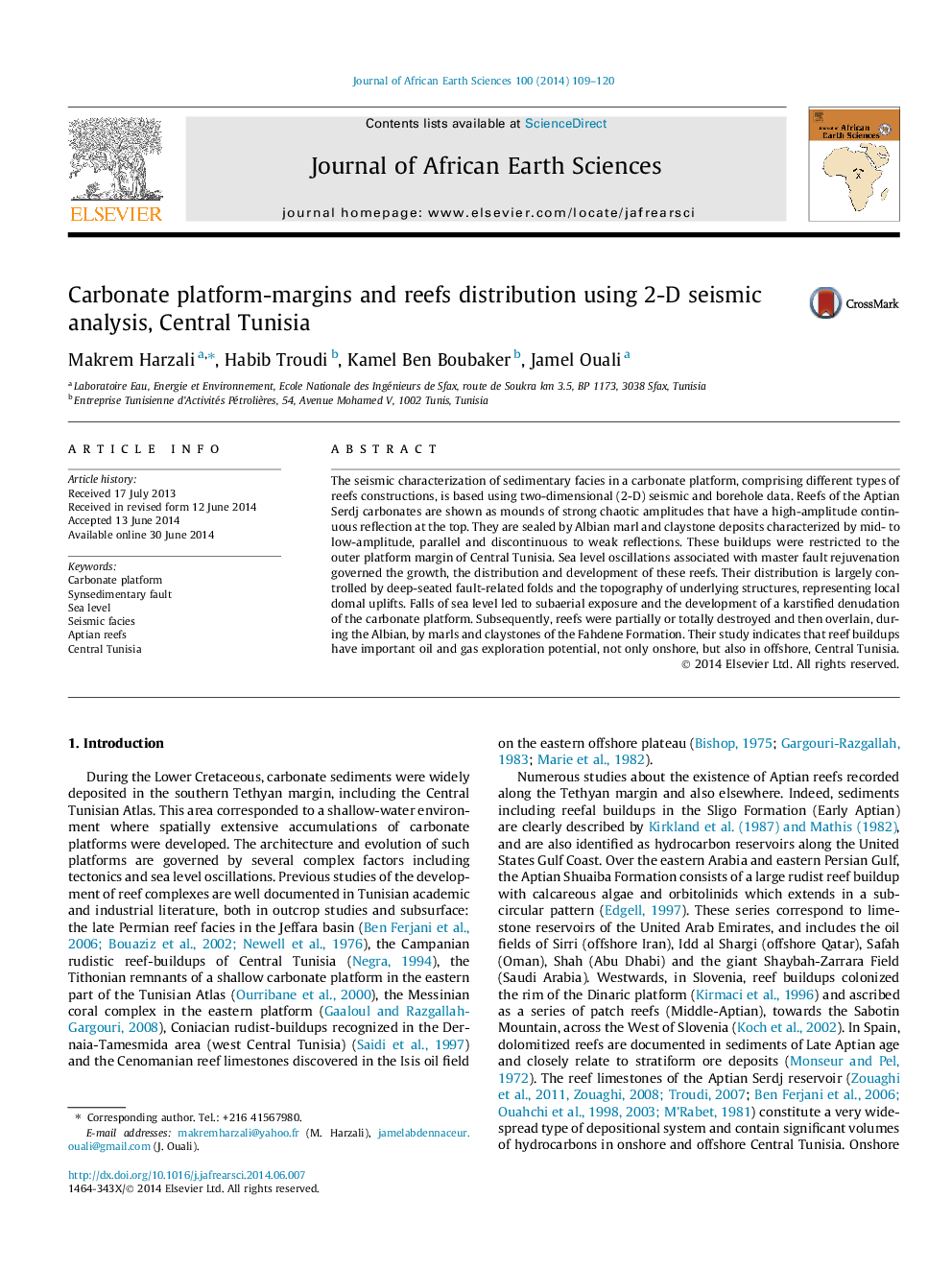| Article ID | Journal | Published Year | Pages | File Type |
|---|---|---|---|---|
| 6443746 | Journal of African Earth Sciences | 2014 | 12 Pages |
Abstract
The seismic characterization of sedimentary facies in a carbonate platform, comprising different types of reefs constructions, is based using two-dimensional (2-D) seismic and borehole data. Reefs of the Aptian Serdj carbonates are shown as mounds of strong chaotic amplitudes that have a high-amplitude continuous reflection at the top. They are sealed by Albian marl and claystone deposits characterized by mid- to low-amplitude, parallel and discontinuous to weak reflections. These buildups were restricted to the outer platform margin of Central Tunisia. Sea level oscillations associated with master fault rejuvenation governed the growth, the distribution and development of these reefs. Their distribution is largely controlled by deep-seated fault-related folds and the topography of underlying structures, representing local domal uplifts. Falls of sea level led to subaerial exposure and the development of a karstified denudation of the carbonate platform. Subsequently, reefs were partially or totally destroyed and then overlain, during the Albian, by marls and claystones of the Fahdene Formation. Their study indicates that reef buildups have important oil and gas exploration potential, not only onshore, but also in offshore, Central Tunisia.
Related Topics
Physical Sciences and Engineering
Earth and Planetary Sciences
Geology
Authors
Makrem Harzali, Habib Troudi, Kamel Ben Boubaker, Jamel Ouali,
